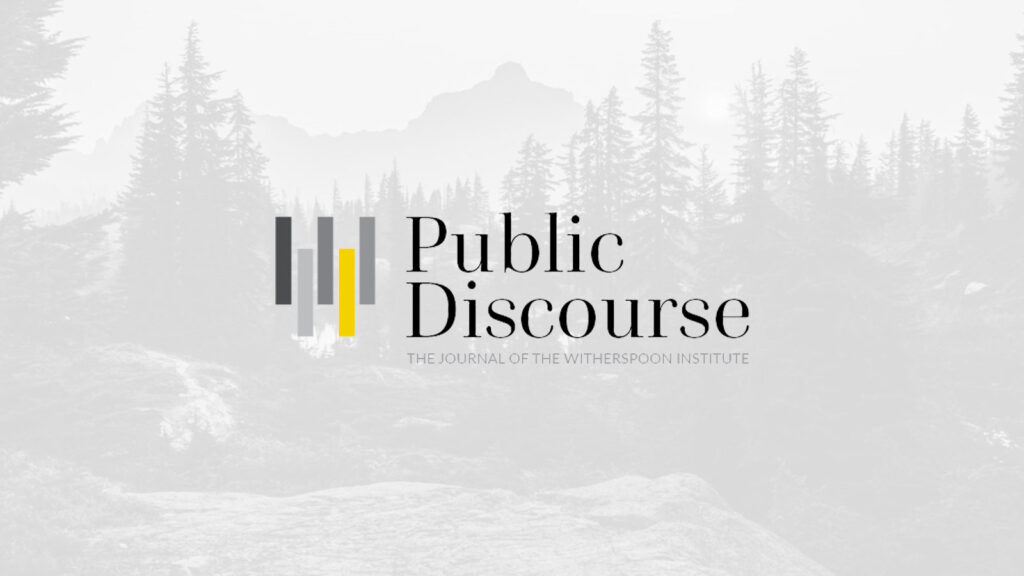Few scholars doubt that pro-life and pro-choice activists disagree about much more than just abortion. In fact, they are generally believed to inhabit entirely different cultures altogether, distinguished by what the sociologist James Hunter has called “fundamentally different worldviews.” Partisans in the abortion conflict are even more inclined than academics to agree with Hunter’s assessment. But are they right?
To be sure, there is strong evidence of a cultural divide. Pro-life activists, for example, overwhelmingly identify as serious Christians, while pro-choice activists tend to be secular. Meanwhile, strongly pro-life citizens are more likely to hold conservative positions on the family and sexuality, while pro-choice Americans are more liberal on these same issues.
Yet abortion attitudes have never neatly fit citizens’ general cultural orientation. It is true, for example, that most pro-life activists are serious Christians. Nonetheless, conservative Protestant elites initially supported abortion liberalization and offered at least tacit support for Roe v. Wade. They did eventually embrace a pro-life position with great fervor. But their minds had to be changed by influential evangelicals like Francis Schaffer. So, if abortion attitudes simply follow from an orthodox Christian worldview, then why were so many evangelicals in need of a pro-life conversion?
Recent survey evidence presents similar problems for the culture-war thesis. While attitudes toward homosexuality are rapidly liberalizing, opinion on abortion remains as stable as ever. This means that those who take a pro-life position on abortion are becoming less likely to embrace a conservative position on gay marriage. In addition, young Americas are suddenly more pro-life than older Americans even though they are the least likely to oppose gay rights. In the new edition of Understanding Public Opinion, due out soon from CQ Press, political scientists Clyde Wilcox and Patrick Carr find that the Millennial Generation is not only “less pro-choice than any other age group” it is “also markedly less pro-choice than any young cohort in any previous decade.”
Start your day with Public Discourse
Sign up and get our daily essays sent straight to your inbox.America’s youth are becoming distinctively pro-life even though they are more liberal on other social questions and less likely to identify as conservatives than older citizens. They are also less likely to be committed Catholics and evangelicals. Such a surprising development led Wilcox and Carr to conclude: “the long term stability in abortion attitudes may be about to change.”
Wilcox and Carr’s findings demand a fundamental reevaluation of the culture-war thesis. After all, if cultural worldviews powerfully shape abortion opinion, then young people should be the most pro-choice age cohort, not the least. After all, young Americans are more secular, socially liberal, and educated than citizens in older age cohorts.
So why might citizens, who otherwise share the worldview or culture of pro-choice Americans, help usher in a growing pro-life consensus?
Part of the answer requires a reassessment of the American culture wars, one that has already been articulated by at least one pro-choice thinker. Peter Singer, a philosopher at Princeton University, contends that even secular Americans continue to see the moral value of animal life through Christian eyes. In his account, most citizens are “speciesists” in the sense that they tend to regard human life as special, if not intrinsically valuable. As Singer explains in the second edition of Practical Ethics, “Today the [Christian] doctrines are no longer generally accepted, but the ethical attitudes to which they gave rise fit in with the deep seated Western belief in the uniqueness and special privileges of our species, and have survived.”
Singer is certainly correct. Most Americans—even those in the pro-choice movement—would place far more value on the life of a human infant than an adult pig even though mature pigs possesses far greater levels of intelligence and self-awareness than newborns. Such evaluations are a great mistake in his view. According to Singer, we should not place more value on the life of human fetuses or infants “than the life of any nonhuman animal at a similar level of rationality, self-consciousness, awareness, capacity to feel pain, etc.” He concludes by arguing that if we could somehow smash this secularized “Christian moral framework” that encourages nearly all of us to regard human life as special, even sacred, then we might stop torturing nonhuman animals through factory farming.
If Singer’s cultural analysis is correct, then it does not follow that the increasing secularization of American society would necessarily lead to greater support for abortion rights. That is, if the central pro-life dogma—that human organisms have a special, intrinsic value, independent of the characteristics they acquire—has been given a secular baptism by centuries of liberal culture, then pro-life sentiment could spread to even the most secular citizens. In other words, secular citizens may be receptive to the pro-life position not despite their worldview or cultural orientation, but because of it.
Yet if Singer is right—if “speciesism” is such an enduring and pervasive cultural orientation— then shouldn’t pro-life sentiment be more widespread among the American public?
The error here is to imagine that citizens generally apply their values in a consistent fashion. As the evangelical elites who once supported Roe should remind us (not to mention countless other examples), there have been plenty of inconsistent “speciesists” in the world. Philosophical consistency requires other, more social and political, forces at work to create a tension between one’s belief in the intrinsic value of human organisms and pro-choice conviction.
A more interesting question is whether younger Americans might experience this sort of tension in a way that older citizens do not. Wilcox and Carr suggest a number of plausible possibilities, including the fact that today’s young people have come of age in an era in which debate has focused on popular abortion restrictions, ultrasound technology has improved, and pro-life films such as Juno are attracting wide audiences.
What they and others have not noticed is an innovative and massive pro-life campaign on college campuses that has been organized by groups such as Justice for All and the Center for Bio-Ethical Reform. Collectively both groups have visited well over 100 campuses (many more than once) and drawn large crowds thanks to huge displays of aborted embryos that they set up on university quads. As I have found in my own research, such images clearly shock many of the students who pass by and draw many others into philosophical conversations with pro-life activists. These efforts excite precisely the sort of tension between our common cultural belief in the special worth of human organisms and approval of permissive abortion laws.
If all of this is right, perhaps the abortion conflict isn’t really a cultural clash between irreconcilable worldviews. Maybe Peter Singer had it right all along.














